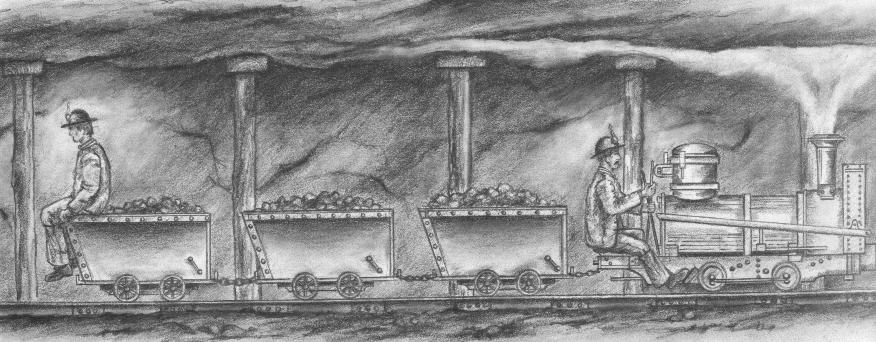|
MANX MINES HISTORY It has often been said that a mine is a hole in the ground with a Cornishman at the bottom, and so true a saying, for Cornwall, being the very heart of mining world wide today, eventually brought many miners to the Isle of Man in the 1800's to seek and remove the riches from the ground. The earliest records show that man was extracting metal from the ground as long as 3000 years ago on many prehistoric sites around the world using the simplest of tools such as the antlers from a deer to stone hammers. Evidence of early workings on the Isle of Man can be seen on the northern cliffs of Bradda head after the Cistercian monks of Furness Abbey had set up their daughter house, the Abbey of Rushen, on the Island in the 13th century. This mining took place under the royal warrant of the king of Man. The workings consist of a series of short drivings into the upper heights of the cliff at various levels and represent the first Ďmining properí for this period. Evidence of bronze age activity was discovered at Ballaugh and objects found near to Laxey suggest that the smelting and fusing of two metals may have occurred as early as 1700 BC, but in 1992 two stone mauls were recovered from South Bradda by Terry Worthington whilst on a visit to the site by the mines group. The stone hammers were quickly sent to England for dating by specialists which confirmed the mining of copper on the Isle of Man around 1200BC. True bronze would consist of copper (Cu) and tin (Sn) at a ratio of 9:1 but it is believed that the local bronze may have also been made using lead. Tin would have to have been imported on the trading routes between England and Ireland. The Manx iron age commenced later at around 500BC and little is known about this era due to the decay of iron artefacts. The only known mines to produce haematite are those of Maughold on the north east coast but smelts have been located in other parts of the Island. Evidence of early workings exist on the cliff face above Traie Curn. There
had been sporadic periods of mining since the 12th century
when men first started to venture underground in the Stanley period.
Rich veins of lead ore had been located in the cliffs at Bradda and
worked out by the late 1800ís. Mining
in the Foxdale district didnít really take off until the early 1700's
but in the mid 1800's the mine employed 250 men underground. An average
of 3,500 tons of ore would be raised annually. The central mine worked
successfully until closure in 1911. The
Great Laxey and most successful of mines worked for over one hundred and
fifty years until itís closure in 1929. The mine had a total workforce
of more than five hundred men in the 1850's and by the
1870's production reached it's peak producing 2,500 tons of lead and
silver, 9,000 tons of zinc and an average of 500 tons of copper
annually. Mining did briefly recommence in the 1950ís when a company reworked the Snaefell mine by re-timbering the adit level under the mountain but it was never worked productively. However, two and a half thousand tons of lead concentrate was produced from re-working the spoil heaps using flotation tanks.
|
